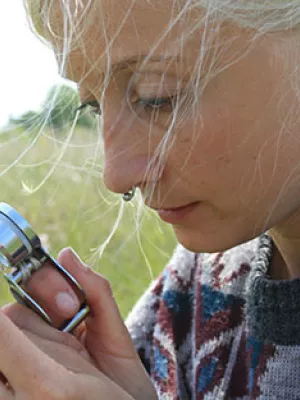
Lina Herbertsson
Researcher

Seed treatment with clothianidin induces changes in plant metabolism and alters pollinator foraging preferences
Author
Summary, in English
Neonicotinoids, systemic insecticides that are distributed into all plant tissues and protect against pests, have become a common part of crop production, but can unintentionally also affect non-target organisms, including pollinators. Such effects can be direct effects from insecticide exposure, but neonicotinoids can affect plant physiology, and effects could therefore also be indirectly mediated by changes in plant phenology, attractiveness and nutritional value. Under controlled greenhouse conditions, we tested if seed treatment with the neonicotinoid clothianidin affected oilseed rape’s production of flower resources for bees and the content of the secondary plant products glucosinolates that provide defense against herbivores. Additionally, we tested if seed treatment affected the attractiveness of oilseed rape to flower visiting bumblebees, using outdoor mesocosms. Flowers and leaves of clothianidin-treated plants had different profiles of glucosinolates compared with untreated plants. Bumblebees in mesocosms foraged slightly more on untreated plants. Neither flower timing, flower size nor the production of pollen and nectar differed between treatments, and therefore cannot explain any preference for untreated oilseed rape. We instead propose that this small but significant preference for untreated plants was related to the altered glucosinolate profile caused by clothianidin. Thereby, this study contributes to the understanding of the complex relationships between neonicotinoid-treated crops and pollinator foraging choices, by suggesting a potential mechanistic link by which insecticide treatment can affect insect behavior.
Department/s
- Centre for Environmental and Climate Science (CEC)
- BECC: Biodiversity and Ecosystem services in a Changing Climate
- Biodiversity
- Biodiversity and Conservation Science
- Functional zoology
- Lund Vision Group
- LU Profile Area: Nature-based future solutions
- Pheromone Group
Publishing year
2023-12
Language
English
Pages
1247-1256
Publication/Series
Ecotoxicology
Volume
32
Issue
10
Document type
Journal article
Publisher
Springer
Topic
- Ecology
Keywords
- Flower preference
- Glucosinolates
- Neonicotinoid insecticides
- Plant defense metabolism
- Plant-pollinator interactions
Status
Published
Research group
- Biodiversity and Conservation Science
- Lund Vision Group
- Pheromone Group
ISBN/ISSN/Other
- ISSN: 0963-9292